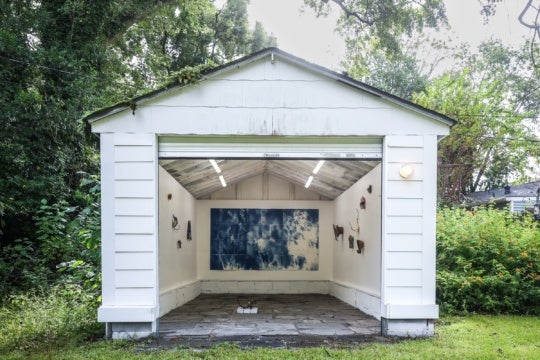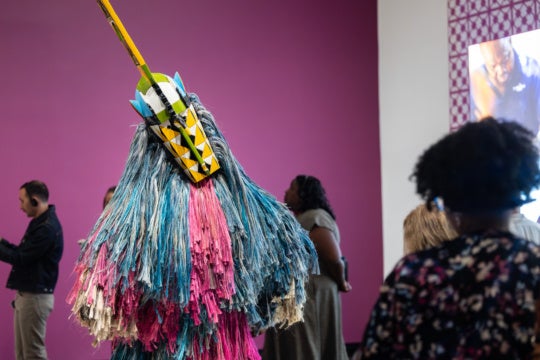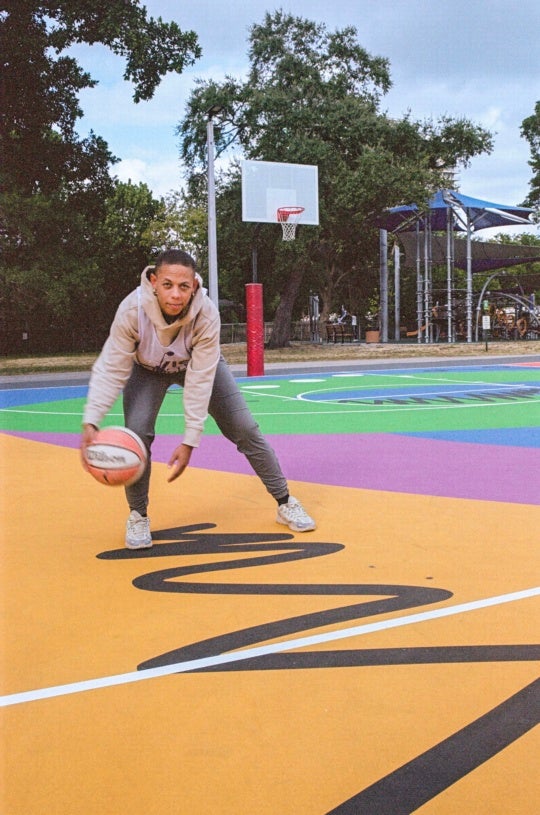On view at Crystal Bridges through March 20, 2023, the multi-sited exhibition Entre/Between does not offer answers or set categories, but the diversity of works ranging from 1851 to the present raise questions around what the identity category Latinx is and how it has been historically constructed. Thoughtfully, the exhibition is organized into the loose themes of “Identity,” “Labor,” and “Borderlands.” While these themes, along with a territorial map of the United States, serve to guide viewers through the exhibition, they are not definitive. The show demonstrates both the richness and messiness within the context of migration and colonialism, exploring topics of land, race, erasure, protest, and memory.
Entre/Between is located in the special exhibition space set to the left of the first main gallery. This hall section includes a few works and a large, digital map showing population changes in the United States from the pre-Columbian era until today. The map introduces viewers to the show’s guiding themes by demonstrating the fluidity of cultural and governmental boundaries over time. When put into conversation with works such as El Río (The River) (2018) by Xicano cartoonist Zeke Peña, dynamic exchanges arise addressing how differing American mythologies shaped what the United States is today. Peña’s work focuses on the Rio Grande’s significance to the Indigenous peoples of the area and the traditional stories they tell about it.
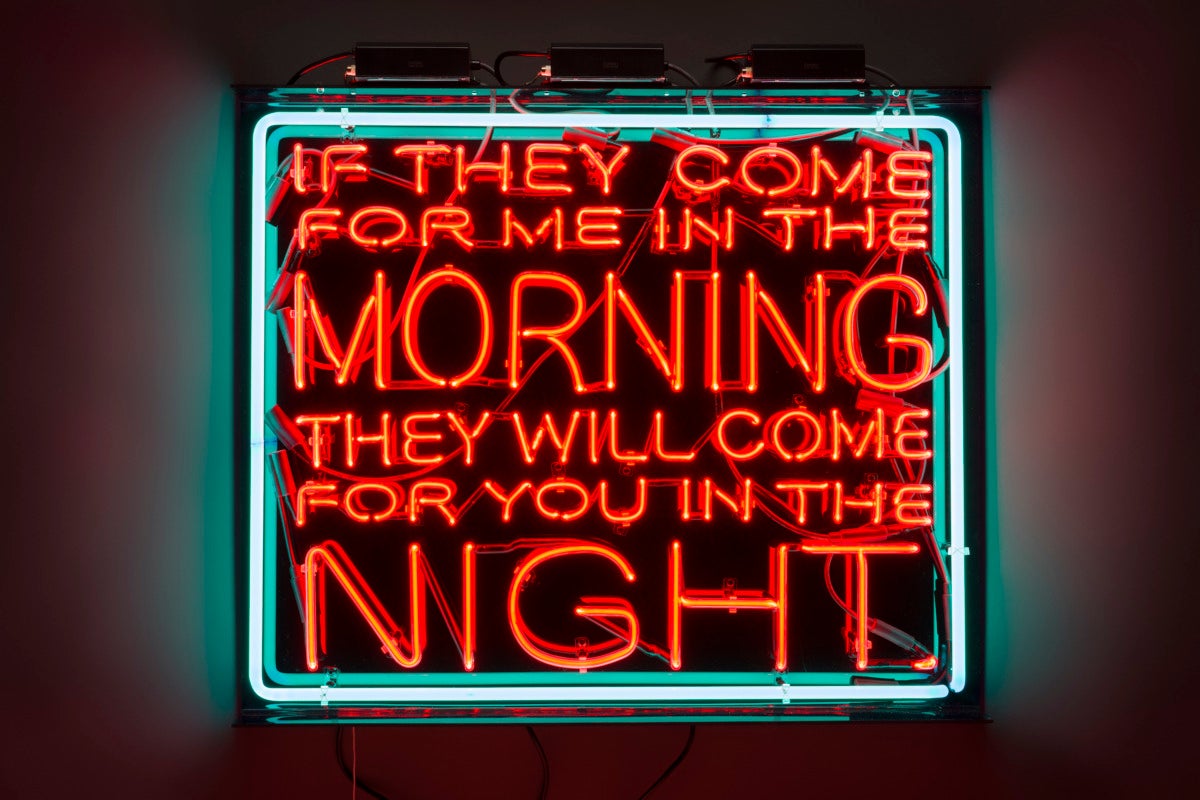
The bulk of the exhibition lies inside a deep blue room lit with the rainbow fluorescent lights of Patrick Martinez’s street signs. Filling a complete wall, the eight multi-colored rectangular signs are the most eye-catching piece in the space. These works set the tone of the show with their luminosity and messages of hope and protest. Echoing the form of the fluorescent street signs in Los Angeles, Martinez’s signs include quotes such as “If they Come for Me in the Morning, they will Come for You in the Night,” by James Baldwin and “Love can Conquer Hate,” by Marvin Gaye, as well as “La Micración es Natural” (Migration is Natural) and “Paratodos Todo Nada Para Nostros” (Everything for Everyone, Nothing for Us),” a Zapatista rally cry. A large bench flanked with bright green candies from Felix Gonzalez-Torres’s “Untitled” (L.A.) (1990) sits in front of the signs. These two pieces center Los Angeles as an important city for both artists. While the signs reference the public sphere of street culture, “Untitled” acts as an intimate analogy for the relationship between Gonzalez-Torres and his partner Ross Laycock while they resided in L.A. The candies serve as a metaphor for Laycock’s body when he was living with AIDS. Gonzalez-Torres invites the public to share in the memory of Laycock by taking and eating a piece of candy. As visitors participate, the installation shrinks, echoing the wasting properties of the disease. The museum site hosting “Untitled” is required to refill the installation daily, allowing the memory of Laycock to continue. Public and private collide in the space between “Untitled” and the street signs to explore the role that one multi-cultural center, Los Angeles, plays in Latin American culture and how Latinx people have contributed to the city.
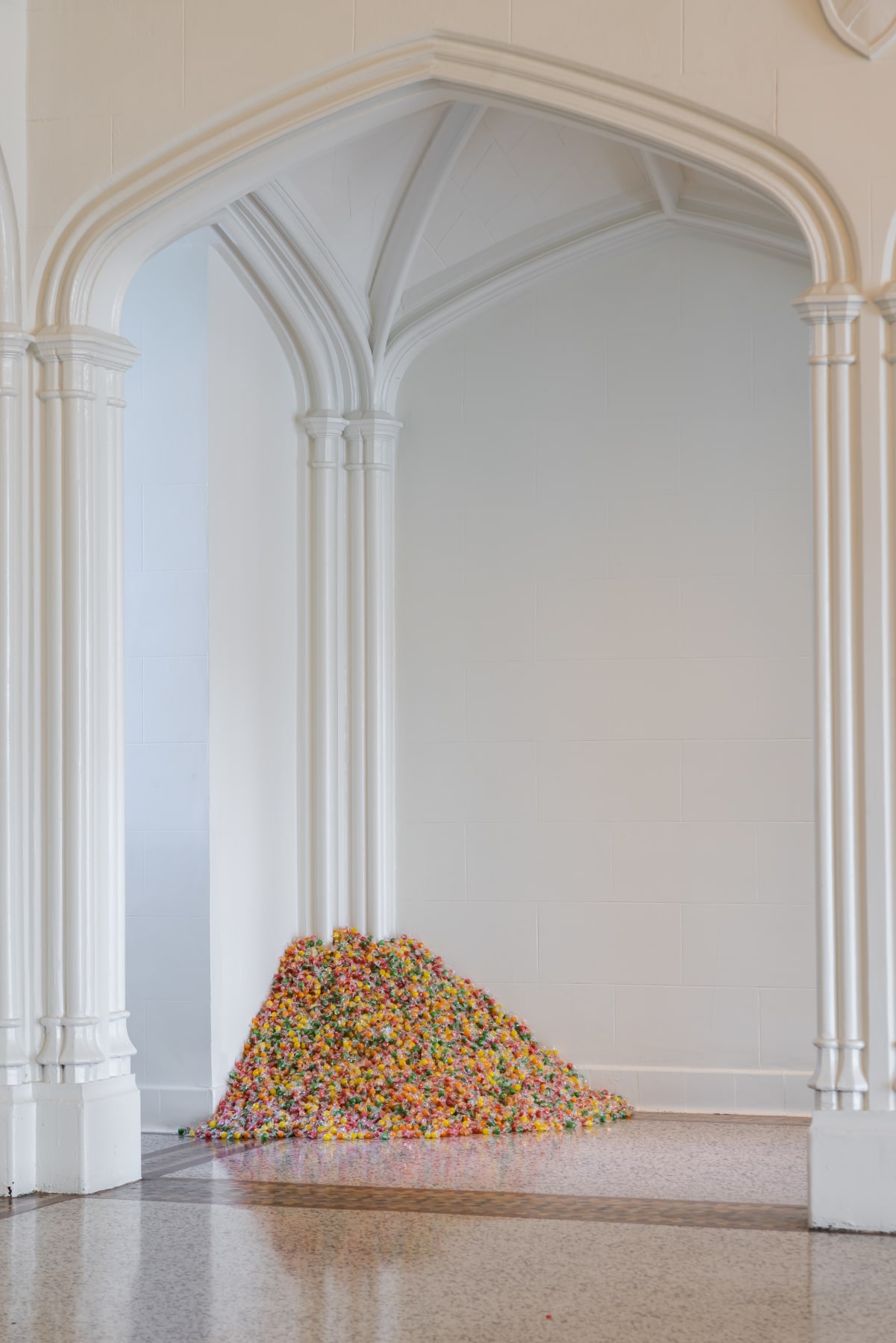
At the end of the gallery space a large TV plays a visitor favorite, Carlos Martiel’s Tercera Raíz (Third Root) (2020). Rolling in a twenty-four-minute loop, the video focuses on a lush forest, still besides the subtle movements of shadows and light. For a brief moment, Martiel’s naked body is visible in the landscape. Martiel has Cuban and Jamaican ancestry and identifies as queer and Afro-Latinx. He teases the audience with the brief glimpse of his body to explore the frequent erasure of Africans in Latin American history. Despite millions of Africans being brought into Latin American regions during the transatlantic slave trade, they are often under acknowledged as integral parts of the culture and society.
Like many of the artists featured here, Gonzalez-Torres and Martiel hold multiple identities. Visual art allows for a multiplicity and ambiguity of identities to coexist in one object outside of the pitfalls of linguistic categorization. While identity labels, like Latinx, continue to be embraced and contested, Tercera Raíz, “Untitled” (L.A.), and other pieces in Entre/Between allow for individuals to be fully present in their complexity, without demanding them to check specific identity boxes. The significance of mounting an exhibition like Entre/Between is that visual art allows for a multiplicity and ambiguity of identities to coexist in one object outside of the pitfalls of linguistic categorization.
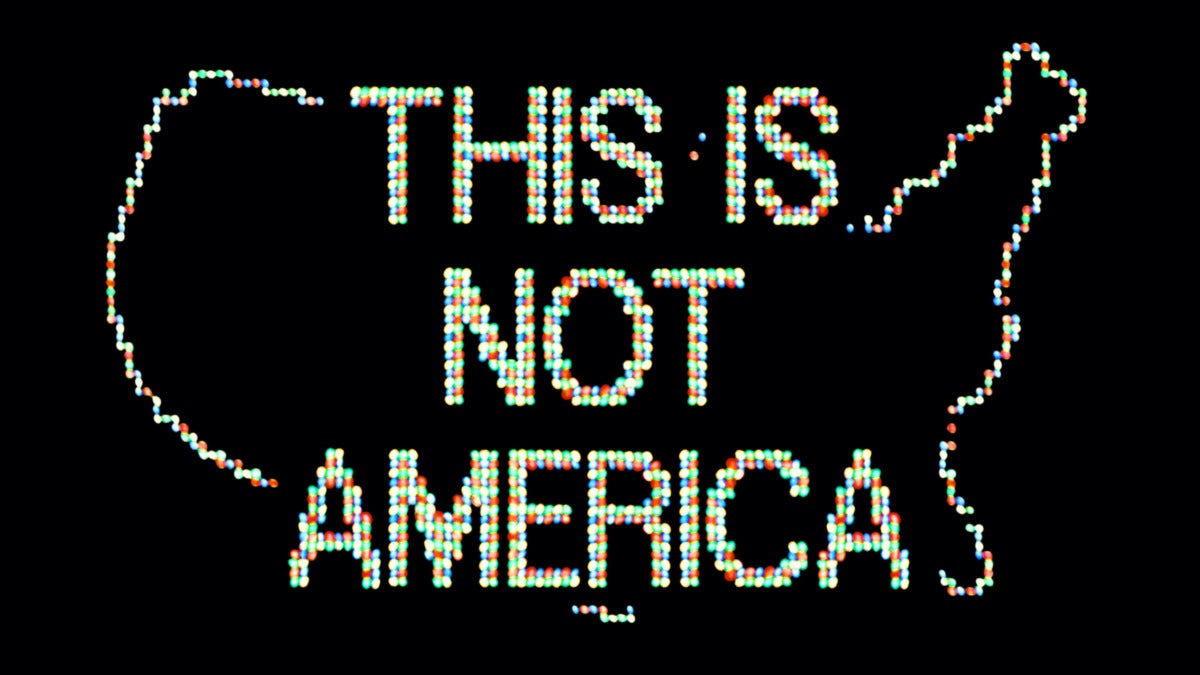
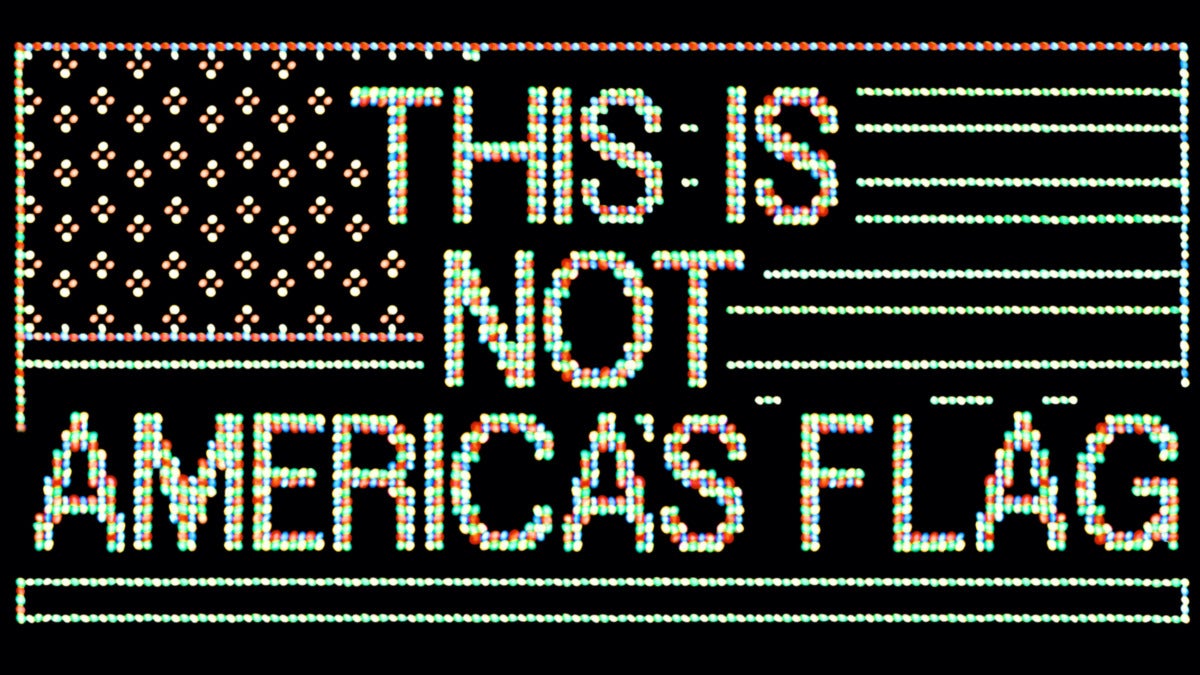
The Momentary, a separate Crystal Bridges institution, hosts an additional piece to Entre/Between: the large outdoor projection A Logo for America (1987) by Alfredo Jaar. Perhaps the most didactic piece in the exhibition, it insists through a map and text: “This is not America” and “This is not America’s Flag.” While Arkansas specifically is not mentioned in the exhibition, as an Arkansan myself, I found A Logo for America to be the most poignant for addressing the changing populations of Northwest Arkansas, where Crystal Bridges is located. In the past thirty years, the demographics of the area have experienced a major shift with a large increase in Latinx, Asian, Pacific Islander, Black, and Native American populations making the NW corner one of the most diverse regions in the state. As the area continues to change economically and culturally, A Logo for America holds space for Indigenous Arkansans, as well as for new populations, to stake their claim in what the region and the state will become.
Curator: Xuxa Rodríguez, Assistant Curator of Contemporary Art, PhD, Crystal Bridges Museum of American Art. Curatorial partner for the exhibition’s performances and videos: Cynthia Post Hunt, Curator of Performance at the Momentary, with support from Victor Gomez, Curatorial Assistant for Contemporary Art at Crystal Bridges Museum of American Art; Abby Hermosilla, Curatorial Associate at Art Bridges Foundation; and Ivy Vuong, 2022 Havner Curatorial Intern at Crystal Bridges Museum of American Art.

